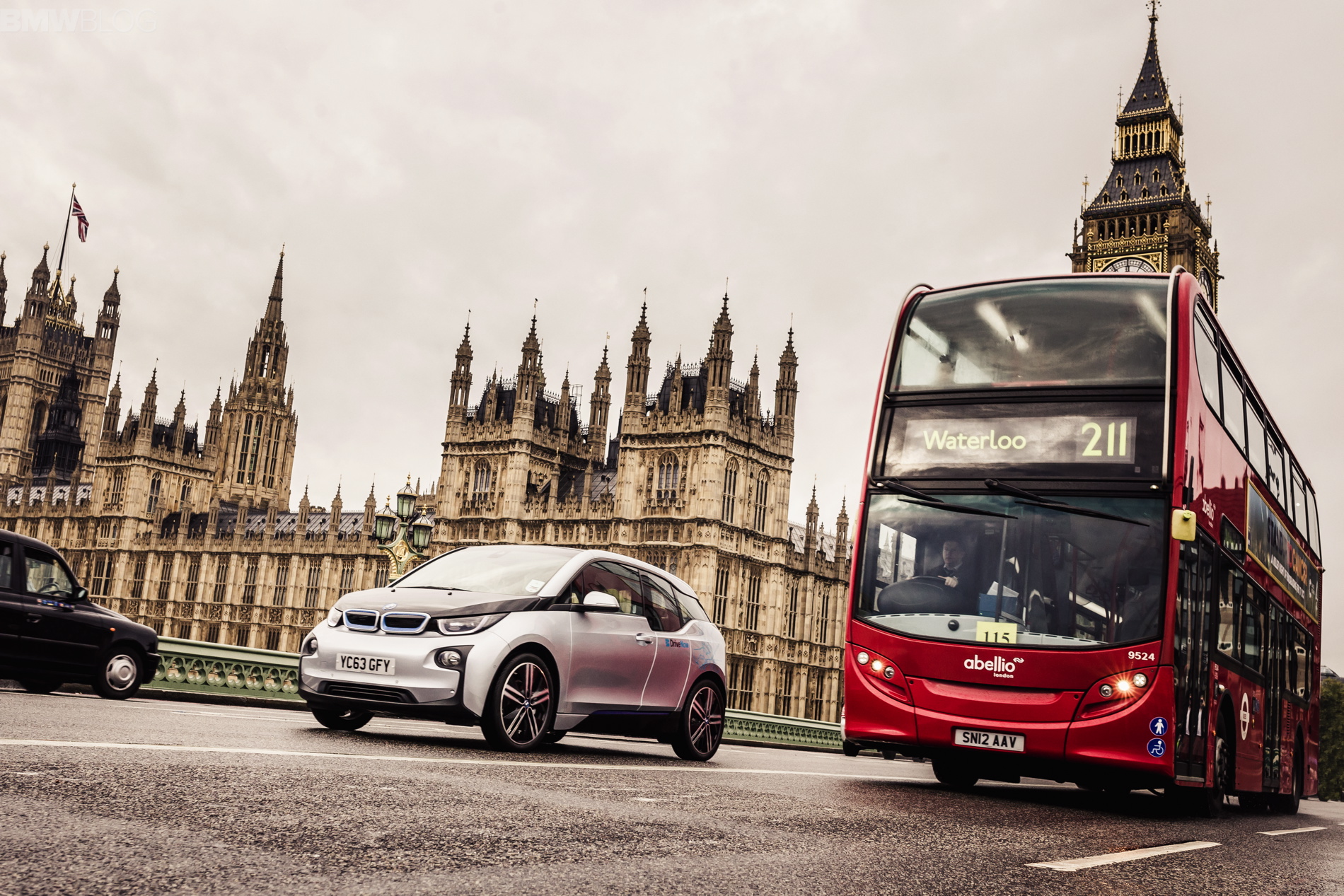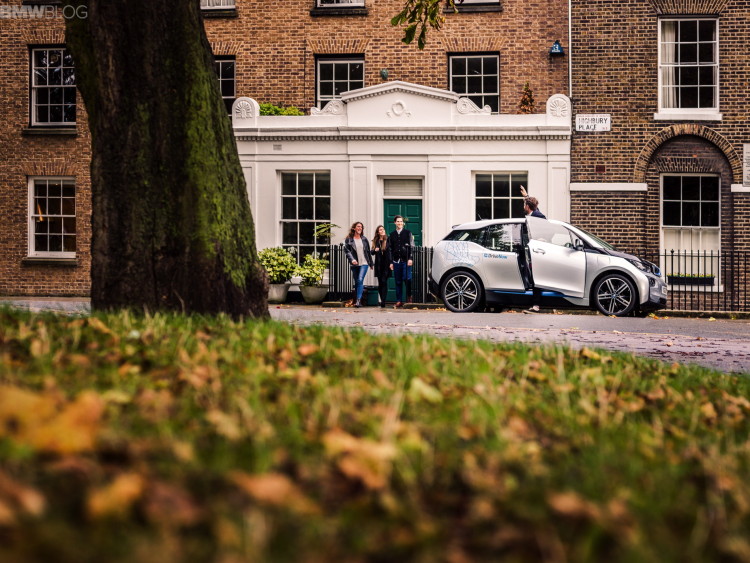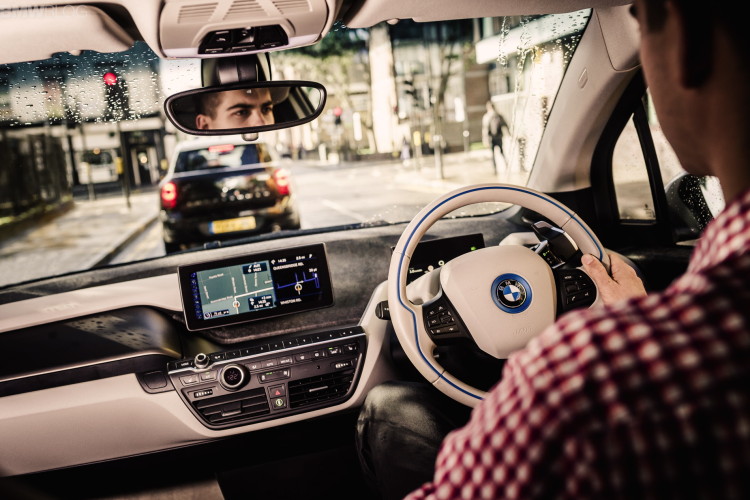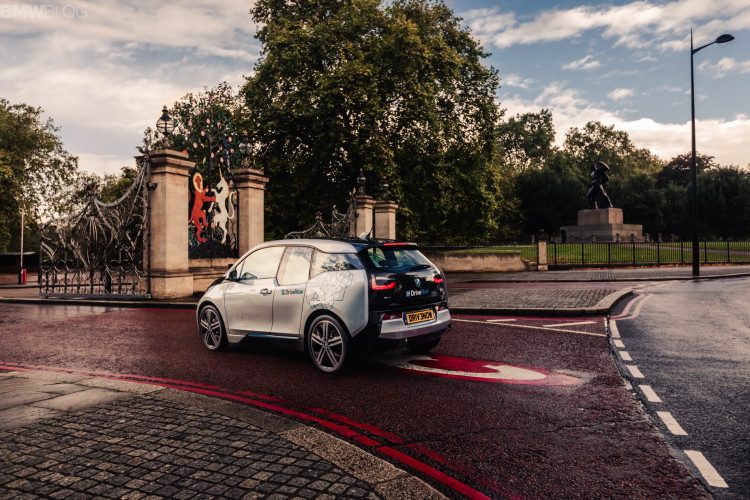The carsharing service DriveNow is commencing with the extension of its vehicle fleet with the addition of the BMW i3. As from today, DriveNow customers in London are able for the first time to use the all-electric premium model by BMW i. This will be followed by the global roll-out of the BMW i3 in DriveNow vehicle pools in the summer of 2015 at several German locations and somewhat later in further European cities. With the addition of the BMW i3 to the DriveNow fleet, BMW i is now implementing a strategic initiative for the promotion of electric mobility, the preparation of which has been in process with the deployment of the BMW ActiveE electric vehicle.
Starting today, DriveNow customers in the British capital will have access to 30 BMW i3s. “eCarsharing reduces traffic congestion and emissions in cities,” explains Peter Schwarzenbauer, Executive Board member of the BMW AG, on the occasion of the premiere in London. “I am pleased that with the BMW i3, we are now able to offer our DriveNow customers unique driving pleasure combined with easy access to electric mobility.”
Carsharing relieves inner cities.
Based on user surveys and traffic analyses it is now already possible to perceive the positive effect of flexible, station-independent carsharing services on mobility behaviour in congested areas. Therefore, services such as DriveNow are seen to a large extent as an ideal supplement to local public transport, which together make the changeover to multimodal mobility without a private vehicle an attractive alternative to owning a car. At the same time, the possibility of renting a vehicle spontaneously and fuss-free and being able to return it anywhere within the urban area offers a great potential in acquiring additional target groups for carsharing.
The rapidly growing acceptance of carsharing is decisive in alleviating traffic congestion. According to the Federal Carsharing Association, more than a million citizens in Germany already belong to the movement. According to company surveys, 38 percent of DriveNow customers have sold a personal vehicle as a result of using the carsharing scheme. In many cases, this applied to older and less efficient vehicles. Customers state that the most important reason for this is that thanks to free floating carsharing, they are able to use a car spontaneously if needed and also feel they are being adequately provided for by local public transport services.
Advantages for DriveNow customers in inner cities: Londoners avoid the city congestion toll with the BMW i3.
Moreover, thanks to DriveNow and similar services, entirely new perspectives arise in the promotion of locally emission-free mobility in urban areas. For example, the use of the electrically powered BMW ActiveE in DriveNow fleets in Munich, Berlin and San Francisco has boosted interest in the experience of driving an all-electric vehicle enormously. As a result, since March 2013, it has been possible to introduce the option of electric mobility to around 3,000 DriveNow customers in Germany each month, making an overall total of 100,000 customers. With the inclusion of the BMW i3, eCarsharing at premium level becomes even more attractive, whilst at the same time conquering further markets.
Therefore, the BMW i3 proves to be an ideal innovator of eCarsharing, with which it will be possible to achieve a reduction not only in traffic congestion, but also in emissions within the urban area. In London, it is exempt from the inner city congestion toll charged for conventionally powered automobiles. So DriveNow customers also benefit financially when they drive a BMW i3 through the city centre. In other major cities in which similar access restrictions apply or are planned, eCarsharing is an ecologically and economically sensible alternative.
The prerequisite for the success of eCarsharing programmes is the cooperation between providers and local authorities. The most crucial issue in this respect is the availability of public charging stations as well as privileged parking spaces for electric vehicles and carsharing fleets. This is of vital importance for flexible carsharing in particular. DriveNow maintains a permanent dialogue with municipal governments. User data on the electric BMW ActiveE, which has been deployed in Munich and Berlin since 2013, provide important information for the development of a requirement-oriented charging infrastructure.
With the introduction of the BMW i3 in London, DriveNow users will initially have access to approximately a dozen charging stations within the entire operative area. In Berlin, DriveNow customers now already have more than 150 charging stations at their disposal for the BMW ActiveE. By the middle of 2016, a further 420 charging points will have been added, 20 of which are designed for DC quick-charging. A further 700 charging stations can be installed in succession if required. Currently, the Munich city council is adopting an initial decision in favour of supporting electric mobility, which also comprises the development of a public charging infrastructure. Moreover, the electrification of several streets in the city centre with the Light and Charge streetlamp produced by BMW i is planned for 2015.
In order to secure the success of electric mobility, BMW is pushing ahead, together with partners from politics, the energy sector and the automotive industry, with charging infrastructure projects throughout Europe and the USA. These include a joint initiative with Volkswagen and ChargePoint for around 100 DC quick-charging stations in the USA, the project SLAM (quick-charging network for axes and large cities) for a total of 600 AC and DC quick-charging stations in Germany and the EU-funded initiative TEN-T for an infrastructure throughout Europe.








































































